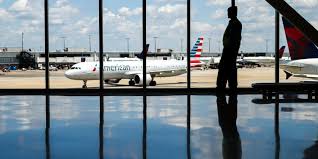
Summer Travel: Airlines Face New Challenges Making It Less Easy Than Before

 :
| Updated On: 18-Aug-2025 @ 12:16 pm
:
| Updated On: 18-Aug-2025 @ 12:16 pmSHARE
Challenges for Airlines in Making Money During the Summer Season
Making money during the summer is no longer as straightforward for airlines as it used to be. Several factors have contributed to a more complex and unpredictable summer travel environment. Airlines have been forced to adjust their schedules, particularly in August, due to shifting travel patterns, increased costs, and changing consumer behavior.
One notable shift is that many travelers now prefer to fly earlier in the year, such as in May or June, rather than waiting for the traditional peak summer months. This change is partly driven by schools releasing students earlier than in the past, which shifts the demand curve. Additionally, demand for flights to Europe, traditionally a summer hotspot, has been moving toward the fall months. This trend is especially apparent among more flexible travelers like retirees who can avoid the peak heat and crowds of summer.
Historically, airlines have made the majority of their revenue in the second and third quarters of the year, with summer being a particularly lucrative period. However, with demand shifting and customers becoming increasingly unpredictable, the third quarter no longer guarantees high profits as it once did. This uncertainty has made planning and maximizing revenue more challenging for airline executives.
One key reason for this change is the increased need for precise scheduling. Airline planners have had to be more surgical in adjusting flight schedules during August as leisure travel demand wanes after the late spring and summer peaks. This is compounded by rising labor and operational costs that have surged since the pandemic, forcing airlines to carefully balance flight capacity with expected demand to avoid losses.
The industry has responded by cutting back on excess flight capacity. Too much capacity over the summer had pushed ticket prices down, hurting profitability. However, these capacity cuts have the side effect of driving airfares higher. According to recent U.S. inflation data, airfares rose by 0.7% in July compared to the previous year and saw a seasonally adjusted 4% jump from June to July. Domestic capacity for U.S. airlines dropped by 6% from July to August this year, a more significant reduction than in previous years. For instance, last year’s reduction during the same period was just over 4%, and in 2023 it was only 0.6%. Back in 2019, airlines cut about 1.7% of capacity from July to August.
Economic uncertainty has also played a critical role in the turbulent summer for airlines. In early 2025, expectations for a blockbuster year were dashed when consumers hesitated amid President Donald Trump’s fluctuating tariffs and broader economic concerns. In response, many airlines slashed prices, even during peak summer months like late June and July, to attract cautious travelers.
While demand has improved somewhat in recent months, as reported during airline earnings calls, major carriers such as Delta, American, United, and Southwest have nonetheless lowered their 2025 profit forecasts compared to their optimistic projections earlier in the year.
Adding to the complexity is the rise of last-minute bookings. Travelers are increasingly waiting until the last minute to make flight reservations, making it harder for airlines to predict and plan capacity efficiently. JetBlue Airways President Marty St. George noted that Memorial Day bookings picked up notably only in mid-May, which was better than forecast, and the momentum carried into June. Still, the trend suggests that many travelers delay finalizing their plans until the very last moment.